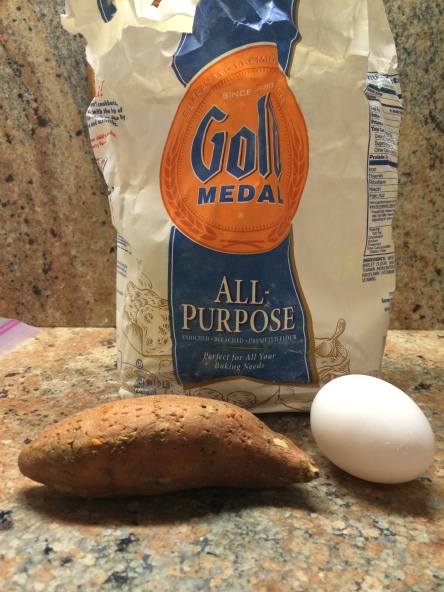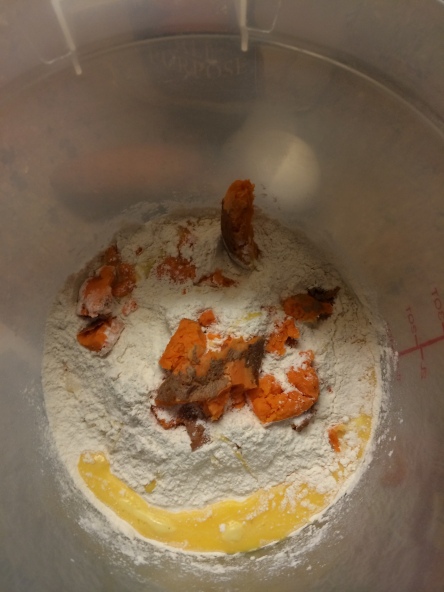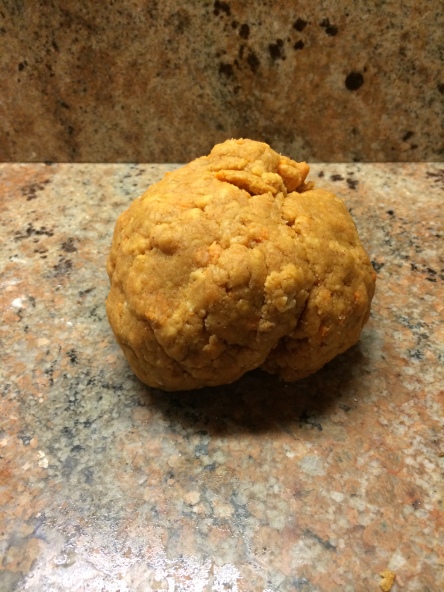Just like humans, dogs and cats have immune systems to protect them from foreign substances. But also like in humans, animals can have allergic reactions to these foreign substances. For example: your pet may react to certain pollens, dust, an ingredient in its food, household chemicals, grooming products, and insect bites. These reactions can have a range of different effects, including itchy, swollen skin, difficulty breathing, or a disruption of the digestive tract, such as: vomiting or diarrhea.
Pets that experience these types of allergic symptoms are often pretty miserable. Allergies are chronic and can cause life-long problems for pets and pet owners. The good news is that they can be managed with the proper diagnosis and monitoring.
The first step is to determine what it is that your pet is allergic to, so as to avoid your pets contact with that allergen. Pet allergies generally fall under one of four main categories:

Contact allergies occur when your pet’s skin comes in contact with a certain material or substance it’s allergic to. Animals with skin allergies most commonly will have reactions to many types of shampoos and flea collars. The skin at the point of contact will be irritated, it may itch, become swollen or discolored, give off a strong odor, and/or loss of hair due to constant biting/scratching. Contact allergies are generally not a hard problem to solve since they’re usually confined to a specific area of your pet’s body. You can experiment by removing different materials that your pet touches or discontinue the use of grooming products until you find the one that irritates its skin. Also, many groomers often offer hypoallergenic shampoos and gentle treatments for sensitive pets.
Food allergies and food intolerance are very separate issues and knowing which you are dealing with is the first step. A pet with an intolerance to a particular food type/brand will typically experience vomiting and/or diarrhea. Pets with a food allergy generally experience skin irritations, digestive disorders, respiratory issues, and/or infections of the ear canal. Most animals are not born with allergies to food; their immune systems develop an allergic response over time to some part of their diet. This problem can arise anytime in a pet’s life, but usually occurs between 2 and 6 years of age. Even pets that have been on the same diet for a long period of time can develop an allergy to that same food. Most often the pet is allergic to a specific ingredient in the food, which can be a challenge to solve. The most common food ingredients which pets are allergic to are: beef, chicken, fish, eggs, soy, wheat, corn, and/or milk.
Once you’ve determined your pet has an allergy, you can begin the process of elimination to isolate the specific ingredient causing the reaction. This can be a long process and requires strict monitoring of your pets diet, which means no treats, vitamins, leftovers/scraps, or even plants around the house. Allergic effects of food can stay in the pets system for 8 weeks or more, so you may have to keep your pet on a special diet for up to 12 weeks to see how he/she reacts, and you may have to do this several times with several different diets before you find the one that doesn’t cause an allergic reaction.
Inhalant allergies in pets are very similar to those we humans experience. Like us, animals can be allergic to the pollen and mold in the outside air (hay fever), and dust mites, mildew, and mold that can be found indoors. These types of allergens can cause severe itching of the ears, feet, groin, and armpits of the animal, but can also be spread across the entire body. Hairless, irritated “hot spots,” caused by excessive chewing and scratching of the affected skin can also occur. Most pets with allergies to airborne particles are usually allergic to more than one. You may also find that your pet’s allergies are seasonal, for example: he/she experiences itchiness only during high-pollen seasons, like humans with hay fever. In this case you can limit your pet’s outdoor activity time during theses seasons. There are many facilities that offer indoor play areas where your pet can stay cool in the summer and warm in the winter and at the same time avoid certain allergens. Now, if your pet is suffering from an indoor allergen, or an allergen that doesn’t vary by season, there’s very little you can do to isolate him/her from that specific allergen, though you may consider an air purifier to provide some relief in the home.
 Flea allergies are probably the most common problem for pets, and they aren’t actually allergic to fleas themselves, but to the proteins found in their saliva when they bite. Affected pets can itch severely from a single bite for over 5 days. If you suspect your pet has fleas try frequent baths and/or administering prescription flea applications/pills. Many professional groomers will offer flea and/or tick treatments to assist you in the removal process. We recommend consulting your veterinarian once you’ve chosen a flea repellent, so as not to cause anymore harmful reactions. You will also want to treat your pet’s environment, including bedding, upholstered furniture, and carpet. Eliminating fleas can be a tedious process and may require several treatments for your pet and home. When treating the home, we recommend having alternate accommodations for your pets so that they are not exposed to the harsh chemicals found in home treatments.
Flea allergies are probably the most common problem for pets, and they aren’t actually allergic to fleas themselves, but to the proteins found in their saliva when they bite. Affected pets can itch severely from a single bite for over 5 days. If you suspect your pet has fleas try frequent baths and/or administering prescription flea applications/pills. Many professional groomers will offer flea and/or tick treatments to assist you in the removal process. We recommend consulting your veterinarian once you’ve chosen a flea repellent, so as not to cause anymore harmful reactions. You will also want to treat your pet’s environment, including bedding, upholstered furniture, and carpet. Eliminating fleas can be a tedious process and may require several treatments for your pet and home. When treating the home, we recommend having alternate accommodations for your pets so that they are not exposed to the harsh chemicals found in home treatments.
In some cases, pet owners may become frustrated by not being able to determine exactly what is causing their pet’s allergic reaction. This is when you and your veterinarian should work together. Your veterinarian may be able to conduct blood work and/or intradermal (scratch) tests to better determine what it is that your pet is allergic to and then recommend possible treatments, or combination of treatments to alleviate your pet’s symptoms.
Treatment of your pet’s allergies will require a lot of patience and determination, but rest assured, with the time and effort, you can help your uncomfortable pet start to feel comfortable again!
 a bunch by introducing pet dye. Personally I love that there is an option to spice up my dogs coat. But there are some pro and cons with dyeing your pet, you first must make sure that it is pet safe dye that you are using. Some people think that dying your pet is awesome and some people think its cruel, the most important thing to remember is the safety of your pet if you decide to add some color.
a bunch by introducing pet dye. Personally I love that there is an option to spice up my dogs coat. But there are some pro and cons with dyeing your pet, you first must make sure that it is pet safe dye that you are using. Some people think that dying your pet is awesome and some people think its cruel, the most important thing to remember is the safety of your pet if you decide to add some color.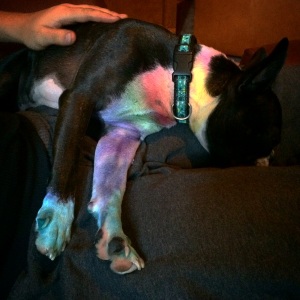 way is to use Manic Panic or Kool- Aid, I’ve used dog friendly blow pens, chalk, Manic Panic, and gel. While personally I prefer the blow pens since they only last about a week or so, Manic Panic is more permanent choice which usually lasts about 2 weeks. My boys are used for events for my work all the time, Dipper my Boston Terrier loves being dyed and will strut his stuff for anyone watching as long as he has a little more color in his coat.
way is to use Manic Panic or Kool- Aid, I’ve used dog friendly blow pens, chalk, Manic Panic, and gel. While personally I prefer the blow pens since they only last about a week or so, Manic Panic is more permanent choice which usually lasts about 2 weeks. My boys are used for events for my work all the time, Dipper my Boston Terrier loves being dyed and will strut his stuff for anyone watching as long as he has a little more color in his coat.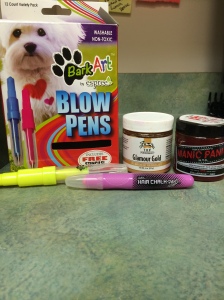
 Nowadays you’ll see dogs looking like tigers, pandas, people chose certain themes just like we put a bunch of hearts on my co-workers dog.
Nowadays you’ll see dogs looking like tigers, pandas, people chose certain themes just like we put a bunch of hearts on my co-workers dog.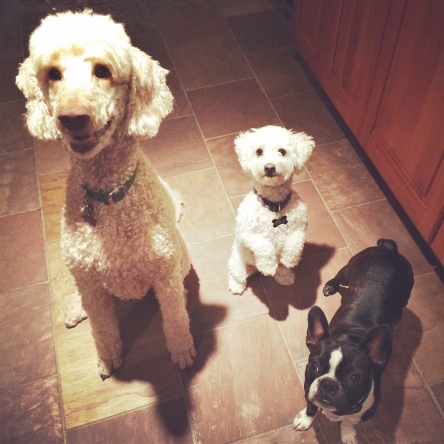 I like to think that I’m a pretty experienced baker but have never tried making treats for my dogs. I found a couple of good, healthy, and potentially grain free recipes to try out. So for this trial round I’m going to try a peanut butter sweet potato treat that makes roughly 2 dozen cookies.
I like to think that I’m a pretty experienced baker but have never tried making treats for my dogs. I found a couple of good, healthy, and potentially grain free recipes to try out. So for this trial round I’m going to try a peanut butter sweet potato treat that makes roughly 2 dozen cookies.